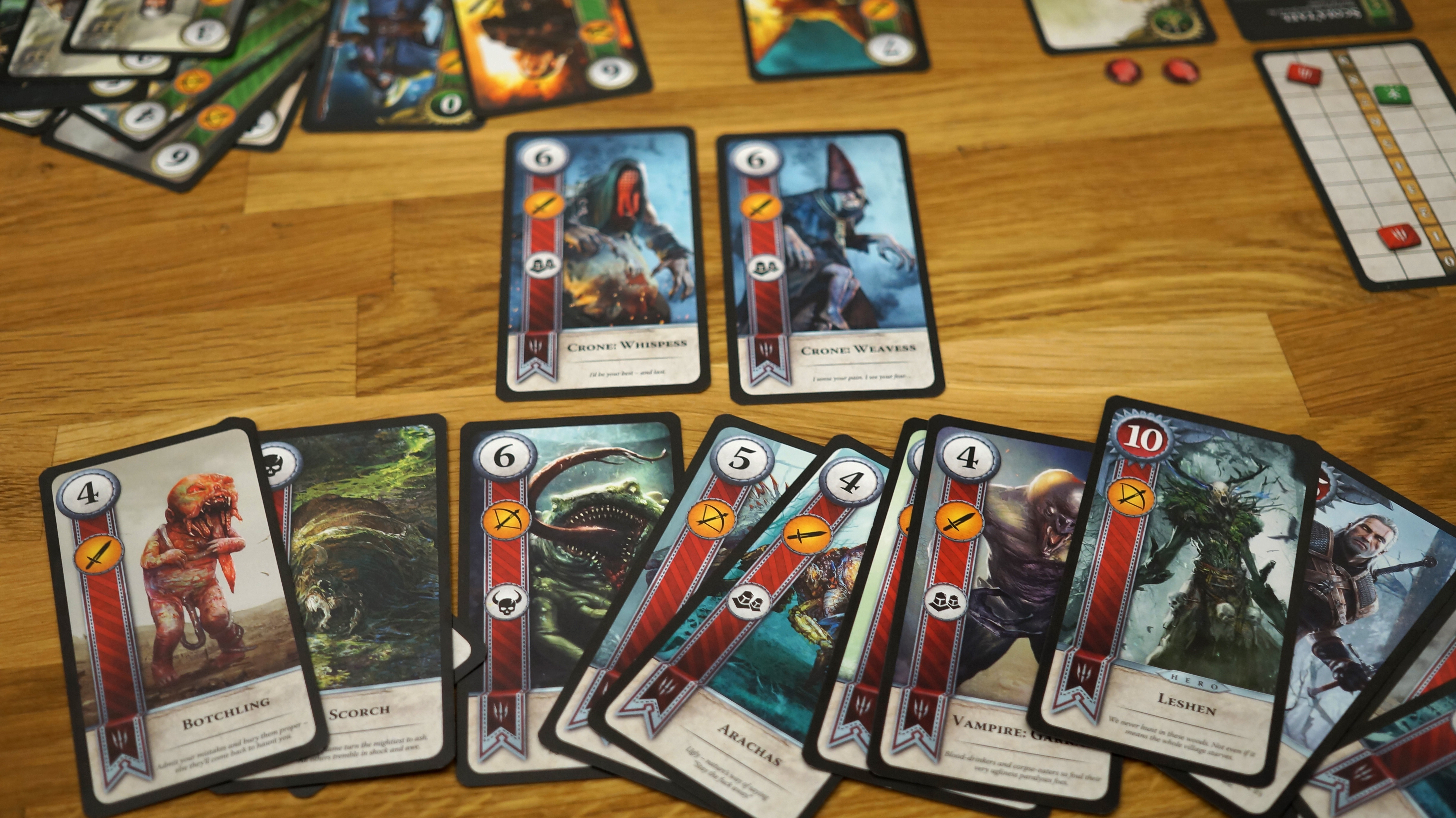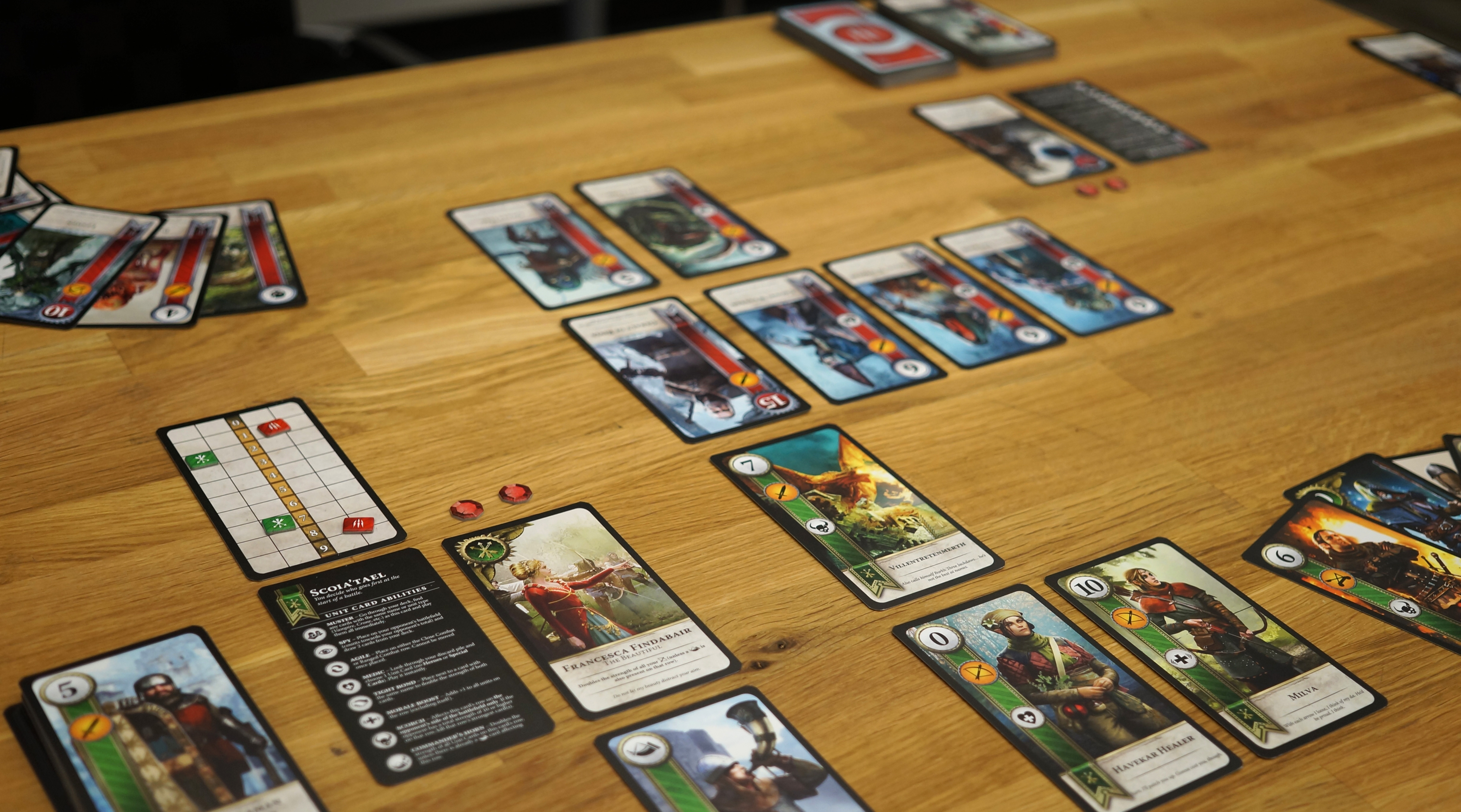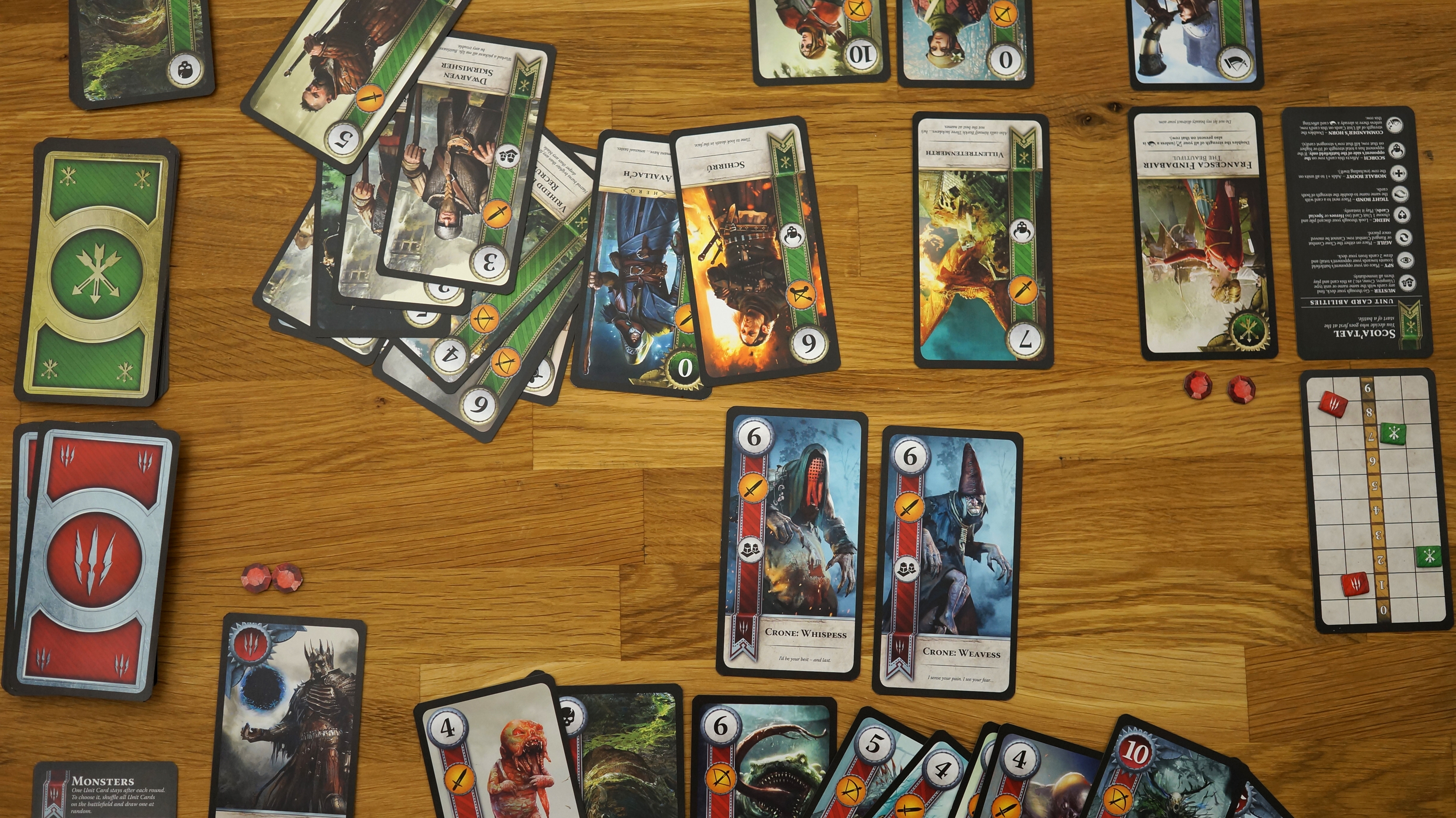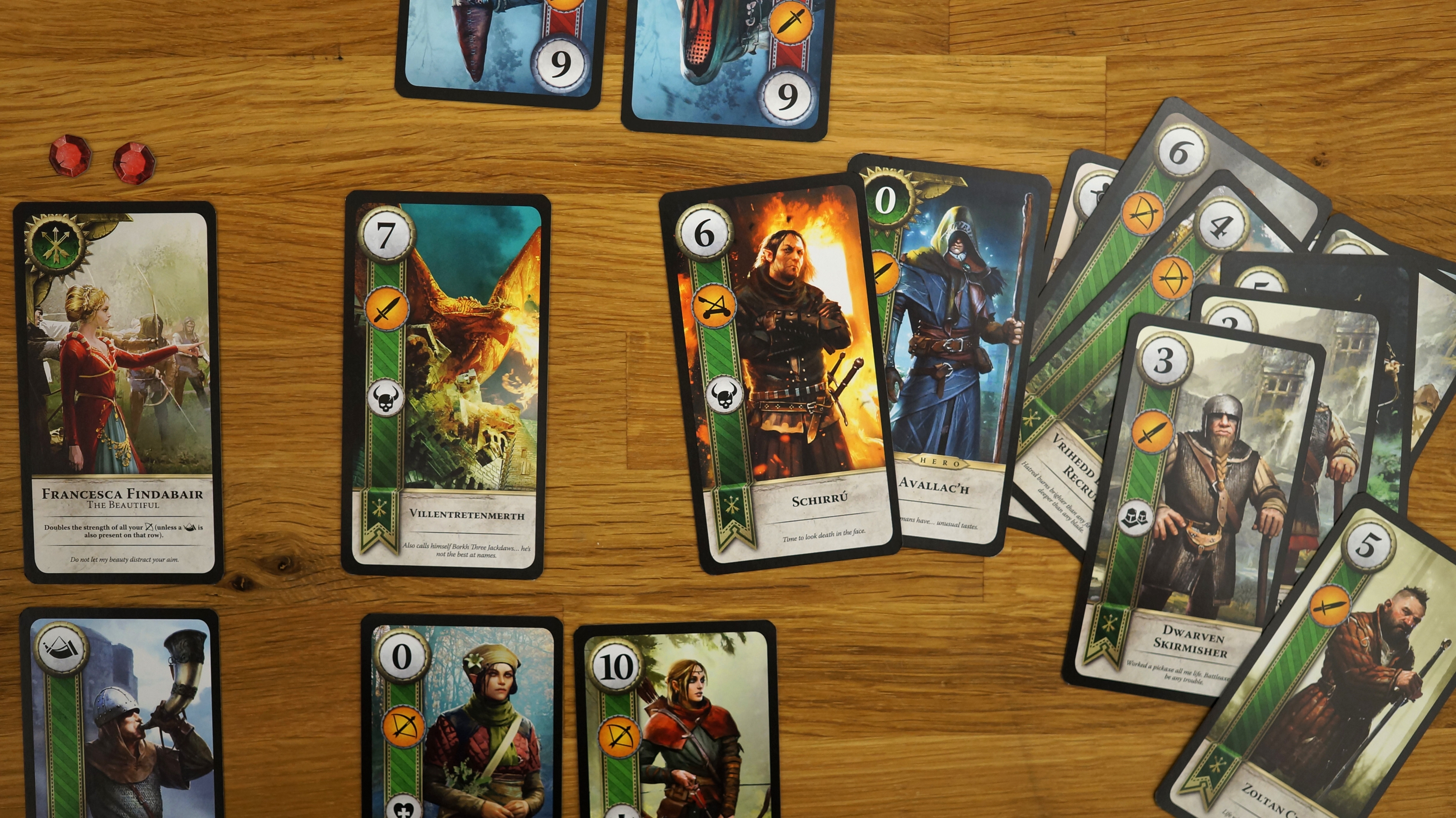The Witcher 3: Hearts of Stone physical Gwent cards are really nice

When CD Projekt Red came by to demo the first Witcher 3 expansion Hearts of Stone, they also dropped off something that got my heart fluttering just a bit: a box of Gwent cards. The box contains two decks of cards, Monsters and Scoia’tael, with the same beautiful art as the digital cards inside The Witcher 3. This box of cards comes with the $20 retail edition of Hearts of Stone, but if you already own the expansion pass, you can buy the cards separately through this website. After opening up the box and playing a couple real life games of Gwent, I’m lusting after a full set with the rest of the factions represented.
The cards look great, with generous space dedicated to the artwork and bold faction symbols on the backs. They’re basically identical to the zoomed-in versions of the Gwent cards you see as you’re choosing which cards to play or add to your deck. Interestingly, the decks aren’t quite identical: I counted 48 Scoia’tael unit cards and 51 Monstesr units, with a side of weather, scorch, decoy and commander’s horns in each.
The decks will look plenty familiar if you’ve played Gwent in The Witcher 3, and include a mix of exclusive units (like werewolves and fiends on the Monsters side) and generic heroes who could be used interchangeably in any deck in the game (like Zoltan Chivay). There are also five leader cards to choose from for each deck, and each deck even comes with a little quick reference card that includes the faction ability listed at the top.
I had fun assembling a deck from the selection of unit cards available, and found myself choosing cards a bit differently than I did in The Witcher 3. There, I always went with the strongest possible cards available, keeping my deck lean to maximize the potential for good draws. With the physical cards, since I was playing against a Gwent newbie, I included a range of weaker cards to keep it more competitive. I did a good job, because I lost.
The second go-around, I picked some stronger cards, and we ended up with a great game that came down to the very last play. I don't know how much the strategy of Gwent really changes with a human component, but face-to-face bluffing and second-guessing definitely makes it a more tense experience.

As a standalone card game, I think Gwent is best suited to a light RPG experience with progression much like its Witcher 3 implementation, with unlockable cards that gradually beef up your deck and supplant your weaker units. It doesn’t have the mechanical depth to be a real competitive human vs. human game in its current form, but I’m okay with that.
The physical cards are a fun collectible—it's a shame the Nilfgaard and Northern Realms decks CD Projekt created were only available in the Xbox One Collector's Edition of The Witcher 3. I’ll pull these decks out now and again to play a couple rounds with fellow Witcher fans. We’ll probably spend most of that time talking about how much we want a standalone Gwent game.
The biggest gaming news, reviews and hardware deals
Keep up to date with the most important stories and the best deals, as picked by the PC Gamer team.



Wes has been covering games and hardware for more than 10 years, first at tech sites like The Wirecutter and Tested before joining the PC Gamer team in 2014. Wes plays a little bit of everything, but he'll always jump at the chance to cover emulation and Japanese games.
When he's not obsessively optimizing and re-optimizing a tangle of conveyor belts in Satisfactory (it's really becoming a problem), he's probably playing a 20-year-old Final Fantasy or some opaque ASCII roguelike. With a focus on writing and editing features, he seeks out personal stories and in-depth histories from the corners of PC gaming and its niche communities. 50% pizza by volume (deep dish, to be specific).

